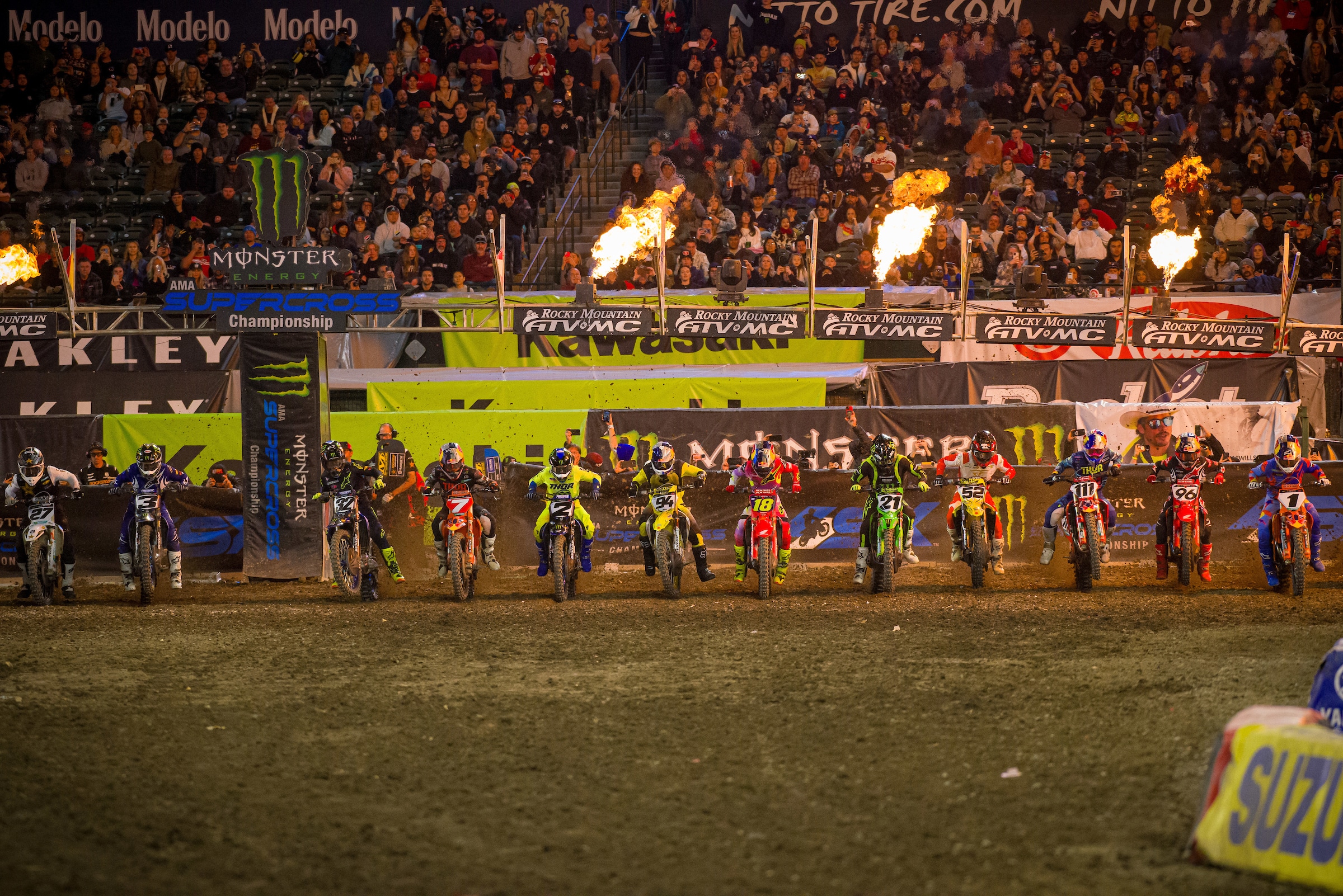Dialed MX is a motocross exclusive shop based out of Aylmer, Ontario, and is owned and operated by Scott Donkersgoed. Specializing in professional bike builds, maintenance as well as engine work.
With over a decade of experience working with professional riders and teams, all over North America, Dialed MX can provide the best for the everyday rider, or racer.

It’s 1 o’clock, Saturday afternoon, Anaheim, California. Phew….
You made it. Somehow, against the odds, you’re here. Riding on the back of the bike you built, heading down the tunnel for first practice with your rider. You get to the bottom of the tunnel where an AMA Official is telling you to shut the bike off. Now begins the long walk through the veins of Angel Stadium to the side of the field where the start line is. You see the sun shining through a break in the wall, hang a left, and you emerge onto the floor. You made it.
The week leading up to the opening round of Supercross in Anaheim can be a rollercoaster of emotions. The stress level can vary, depending on the team you’re working with. As a factory mechanic, you’re generally putting the final touches on things like your toolbox you’re putting on the semi to use at the races. Perhaps mounting the decals to the autograph line barriers or deciding which pair of team-issued shoes you’re going to wear for the big day. Early in the week, the team manager will notify the crew what day and time the press day ride is for the local media, the truck driver will have the semi there Thursday and set up. The coolers will be stocked with drinks and the snack trays will be loaded up. The fridge has multiple flavors of Coffee Mate so you can decide if you want French vanilla or a hazelnut pick-me-up at some point in the day. However, for the general population in the Anaheim paddock, life is not quite this lovely.
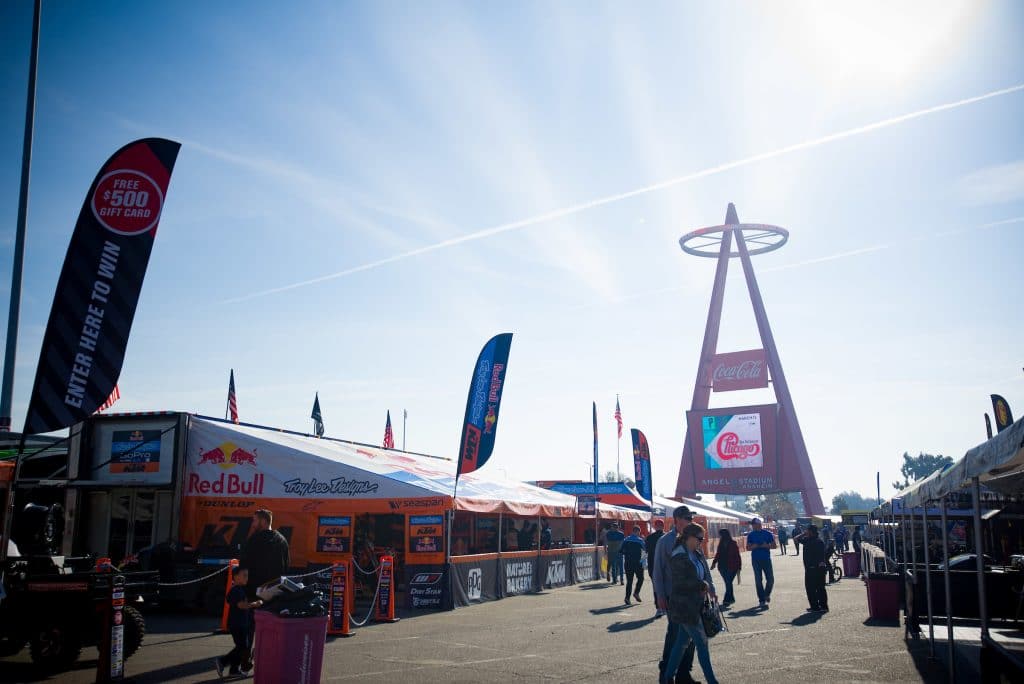
As mentioned before, the hectic week leading up to raceday at A1 really depends on the program you’re trying to operate. A full-blown privateer generally rolls in Friday afternoon, finds a small spot in the back to park the van, sets the EZ UP up, and starts working on the bike. IF said rider is fortunate enough, he will be able to remove the wheels and take them over to the Dunlop semi where a crew of guys is waiting to install a fresh tire. This is the time where you may be swapping suspension from the practice bike to the race bike, installing graphics, or even more hectic, repairing something that went wrong during the week.
In many instances, privateer life is a struggle. Bottom of the totem pole for most things. You may be receiving support, but that support is often delivered Friday afternoon/evening at the stadium. Seats/covers, graphics, wheels, exhaust, perhaps Jamie from Twisted Development setting up the racebike ECU, and so on. No matter how prepared you think you are, once the calendar flips to January 1, you realize the stuff you ordered a month ago, still hasn’t been delivered.
For a mechanic on this program, this is when the anxiety begins to escalate. The motorcycle you’re responsible for is missing half the parts. So now, you’ve got to patch together a race bike with what you have, waiting for the week to end so you can rob parts from the practice bike to complete the race bike.
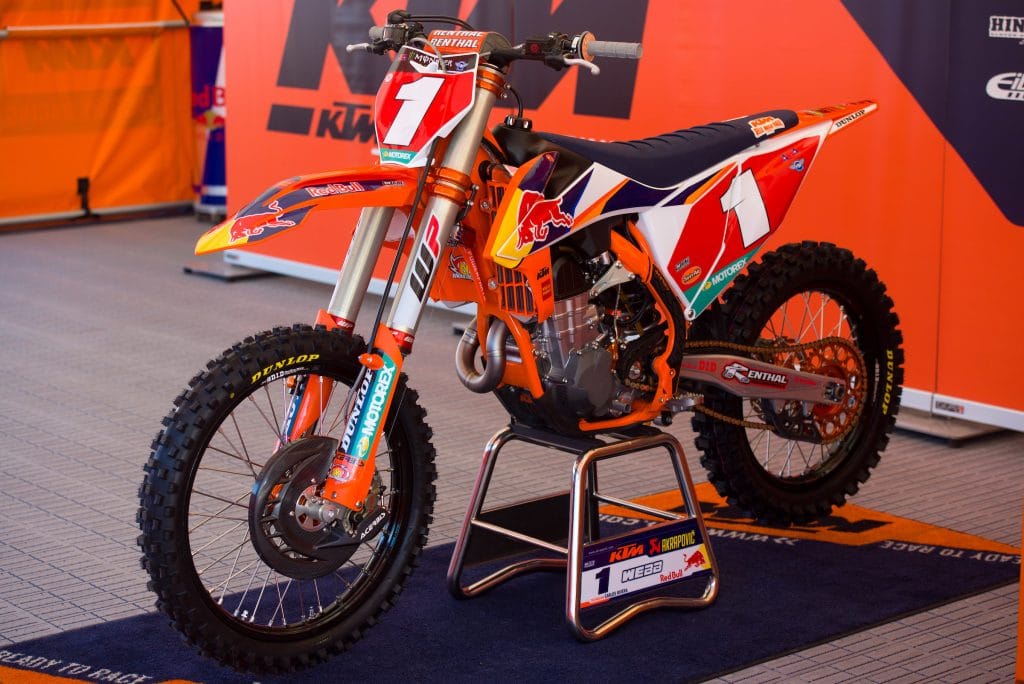
First-hand experience, on more than one occasion –
The race bike is built as complete as it can be with the parts you have. It’s Wednesday and it’s time to shake down the bike at the track before we race it. But, since bikes were late arriving and parts were limited, this bike feels way different than the practice bike with 30 hours on it. You have a conversation with your rider on the way home from the track, he’s not comfortable. You chased the setup all day at the same track he’s felt pretty good on for weeks. He says it, you cringe and bite your tongue… you get back to the shop, or more likely his house, unload the bike, head to the backyard, and wash the bike. Bring it back around to the garage and your week from hell officially hits the rev limiter. He wants his practice bike chassis. Not the whole practice bike, because the engine is tired and is generally not the same, but the nicely broken in chassis that he is accustomed to.
The frames of today’s dirtbikes are specifically engineered to flex in a specific manner under a certain load. Most professional riders can feel the difference in the smallest adjustments on the bike, especially a completely new chassis. Regardless of what material the frame is, steel, or aluminum, it’s still just metal. Think of a steel coat hanger, you bend it back and forth many times, after a while, it gets easier and easier, and if you bend it long enough, it will eventually break. Same principles at play in a frame. Engineers have spent hours and hours developing chassis dynamics, and when the chassis is completely assembled with the engine adding specific structural integrity, it is designed to “bend” certain ways. Well, when it’s new, it doesn’t bend as easily. Its rigidity reduces the characteristics and overall feel or sensations brought to the rider. An example would be in corners, the initial tip over where they begin to lean the bike if they aren’t confident on what the tires are doing under them because they can’t feel when they’re about to slip, it becomes uncomfortable and leads to much slower lap times.
So now you begin disassembling the practice bike, pull everything down so you have the frame, subframe, and swingarm ready to go out back and try to bring back to life and look good again with a Scotchbrite pad. Again, the subframe and swingarm are also included in the chassis characteristics.
Then you disassemble the race bike and have to make one bike out of 2. Using certain parts with a specific amount of time on them to get the feeling as close to what the practice bike felt like, but with a fresh engine. Sometimes that means using certain bolts from the practice bike as well, all the bolts that hold the bike together also play a significant role in how the bike feels to a rider.
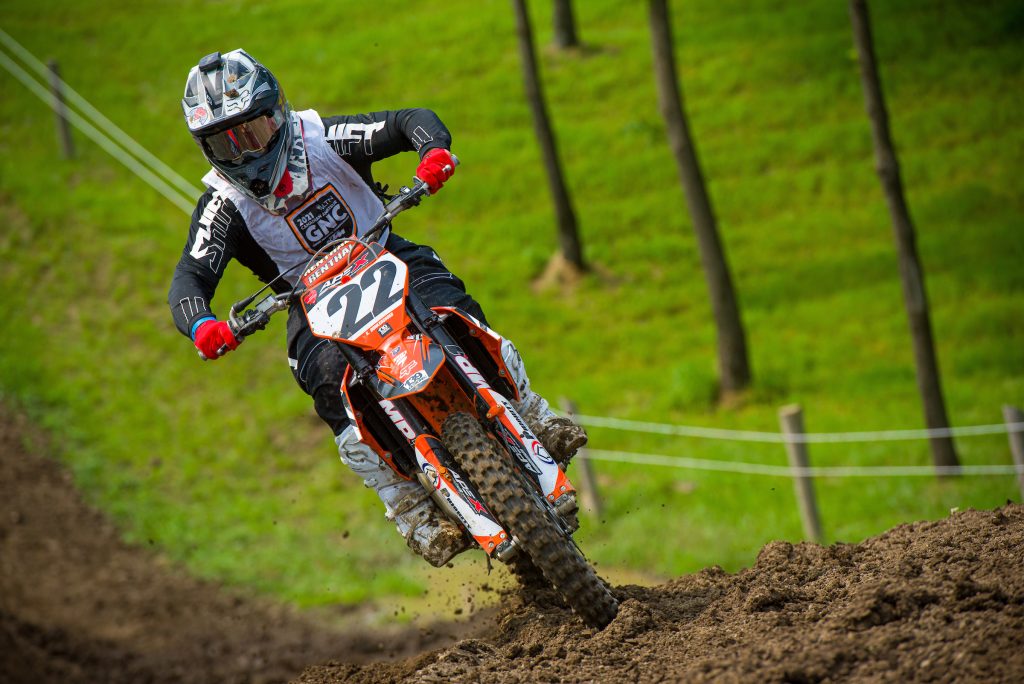
Older bolts will allow a little more flex, and when accompanied with a specific torque value you can create a specific feel the rider is looking for. Most factory teams use titanium hardware throughout the bike for its incredible difference in weight, but it also drastically affects the characteristics of the bike. Christophe Pourcel used to use steel front axle pinch bolts because he preferred the feel of steel. In a perfect world, multiple frames, maybe just 2 or more, would be broken in simultaneously, to have an equal amount of time on each so the difference between the two bikes isn’t near as drastic. But on privateer island, the perfect world is far, far inland.
So now it’s Thursday afternoon, IF the amalgamation of the two bikes went smoothly, you may get time to go ride and make sure things are ok. Worst case, you’re at the track as early as possible Friday to shake it down, then back home to clean, then head to the stadium that afternoon. Nothing like adding a second and third build to your already stressful week before the first race. You finally make it to the stadium and because you’re late, you get parked in a less than convenient location. Usually stuffed in a small opening behind the rows of factory semis. Get everything unloaded and get the wheels over to Dunlop to get new tires mounted. If the wheels come back in time you can mount them back on the bike and head over to complete sound testing, and sometimes that can turn into a nightmare. The humidity, test location, and wind are things that can influence a pass or fail, not to mention the outright condition of the silencer. If you end up not meeting sound requirements it’s time to get creative, a rag in the airbox generally does the trick.
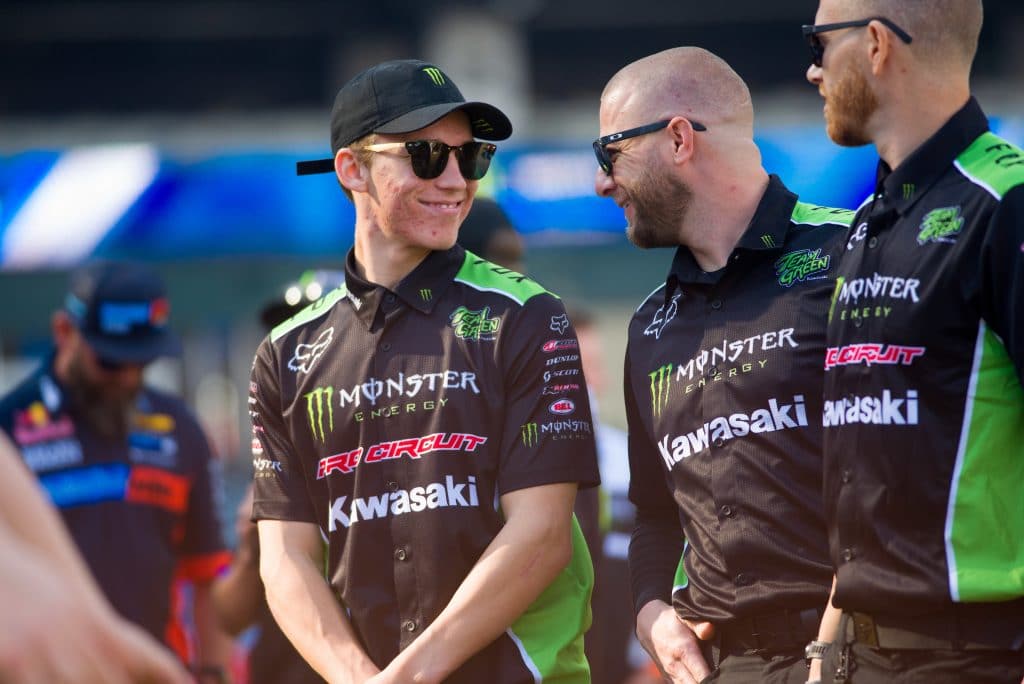
If you don’t make it to sound on Friday, you have another chance to test on Saturday morning, as well as take the bike through tech inspection. The rider’s helmet and jersey must accompany you for inspection, and most times you arrive at a different time than your rider so you have to wait for him to get there with his gear, adding to the stress of still having to complete sound testing all before the day gets underway. Track walk is usually around 11, and if you’ve managed to complete everything that has you ready to go for the day, you can partake. But most times, you’re still setting up and organizing things so your day can run as smoothly as possible. Your rider gets back from the social gathering that is track walk, and now it’s time to press play on the whole thing you’ve been building for weeks.
The 250 class sessions are first and then it’s time for the 450s. You warm the bike up, ride it around, make sure it feels right, come back to the pit, rider hops on and goes and does the same. You grab your backpack, pit board, and marker, he comes back and if things are good, you hop on.
It’s 1 o’clock, Saturday afternoon in Anaheim, California. Phew….





